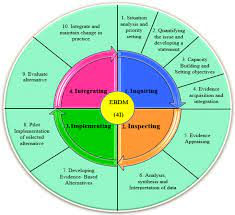How to Reference for NURSFPX4020 Capella Assessment 3: Improvement Plan In-Service Presentation.
- Patel, S., & Wright, M. (2018). Development of interprofessional simulation in nursing education to improve teamwork and collaboration in maternal child nursing. Journal of Obstetric, Gynecologic & Neonatal Nursing, 47(3), s16–s17.
PROFESSIONAL CONTEXT
As a baccalaureate-prepared nurse, you will often find yourself in a position to lead and educate other nurses. This colleague-to-colleague education can take many forms, from mentoring to informal explanations on best practices to formal in-service training.
In-services are an effective way to train a large group. Preparing to run an in-service may be daunting, as the facilitator must develop his or her message around the topic while designing activities to help the target audience learn and practice.
By improving understanding and competence around designing and delivering in-service training, a BSN practitioner can demonstrate leadership and prove him- or herself a valuable resource to others.
Also Read:
NURSFPX4020 Capella University Safety Improvement Plan Analysis Paper
NURSFPX4020 Capella Assessment 3 SCENARIO
For this assessment it is suggested you take one of two approaches:
- Build on the work that you have done in your first two assessments and create an agenda and PowerPoint of an educational in-service session that would help a specific staff audience learn, provide feedback, and understand their roles and practice new skills related to your safety improvement plan, or
- Locate a safety improvement plan through an external resource and create an agenda and PowerPoint of an educational in-service session that would help a specific staff audience learn, provide feedback, and understand their roles and practice new skills related to the issues and improvement goals presented in your chosen context.
NURSFPX4020 Capella Assessment 3: Improvement Plan In-Service Presentation Instructions
The final deliverable for this assessment will be a PowerPoint presentation with detailed presenter’s notes representing the material you would deliver at an in-service session to raise awareness of your chosen safety improvement initiative and to explain the need for it. Additionally, you must educate the audience as to their role and importance to the success of the initiative.
This includes providing examples and practice opportunities to test out new ideas or practices related to the safety improvement initiative. Be sure that your presentation addresses the following, which corresponds to the grading criteria in the scoring guide. Please study the scoring guide carefully so you understand what is needed for a distinguished score.

